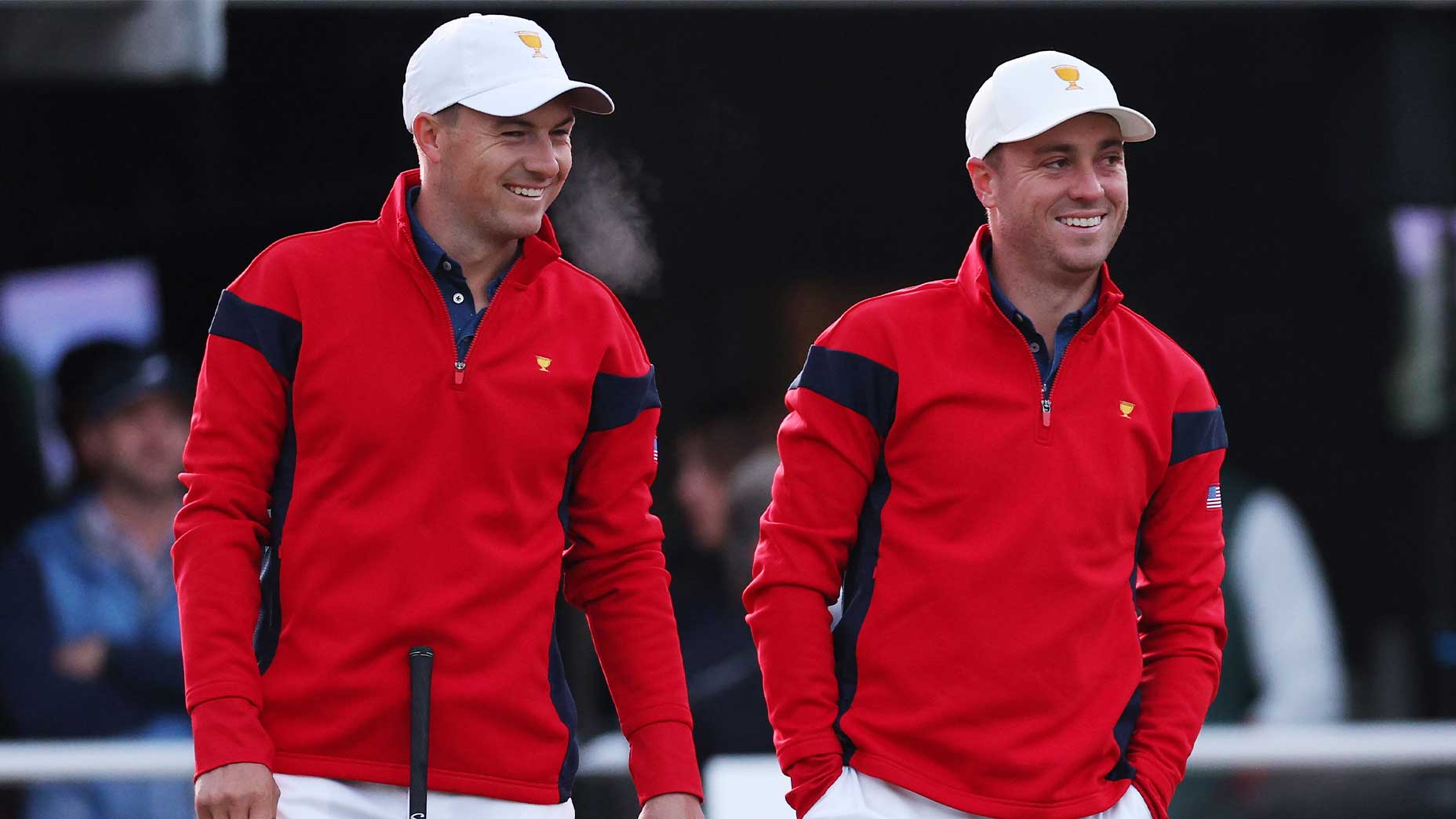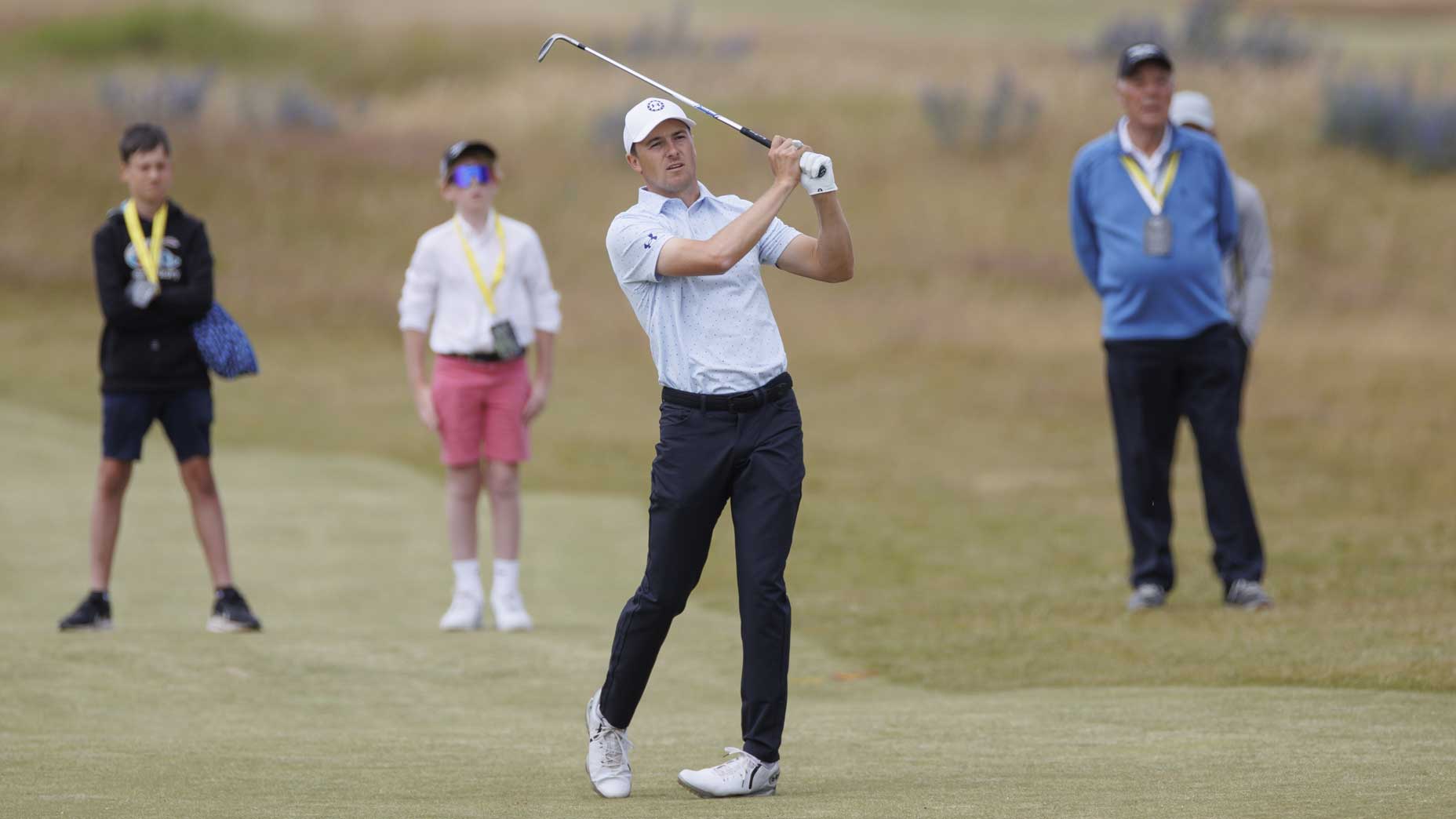Why these ‘crazy’ Jordan Spieth shots were so significant to him

Jordan Spieth's tee shot at 17 and second shot into 18 at the AT&T Byron Nelson on Sunday.
PGA Tour Tourcast
As Jordan Spieth has come in and out of the wilderness in recent years, his swing seemingly has been a perpetual work in progress. We know this because, way more than most players of his ilk, Spieth lets us into the game-improvement tent, chronicling his process with generous, often fascinating, detail.
Take the week before the 2021 Masters, at the Valero Texas Open, where Spieth shot a tidy third-round 67; this was a day before he went on to win by two for his first Tour title since 2017. Spieth said many interesting things about his swing after that round — that he was trying to get “shallower transitionally;” that he thinks about “six different things” during his move; that he’s “trying to go back in time structurally to a place that I’ve been.”
But the most revealing insight was this: Spieth said he was trying to find a “swing feel that’s kind of like an artistic motion, like almost I can see it happening from behind me as I’m feeling it.” His description sounded like a scene from an M. Night Shyamalan film, but what he was saying was, on one level, actually quite simple: Be a kid again. Don’t overthink things. Trust your God-given talents and hit the shot that is required.
If you were watching the golf Sunday — the AT&T Byron Nelson live from TPC Craig Ranch in McKinney, Texas, near Dallas — you were no doubt intrigued to see how Spieth would respond to the pressure of trying to win in front of his boisterous home crowd. Spieth’s game is on much more solid footing than it was a year or two ago, but he is still one of the game’s great high-wire acts.
On Sunday, the par-3 17th at Craig Ranch was playing all of 134 yards; there aren’t many shorter holes on the PGA Tour. When Spieth arrived on the tee, he was just one back of K.H. Lee. A birdie at 17 would go a long way, especially with a reachable par-5 ahead at 18.
There was one problem: 134 is an “awful number” for Spieth, he said after the round. A dreaded in-betweener distance. Time to get creative.
CBS didn’t show a tight shot of Spieth’s ball on the tee, but if you were listening closely, you heard on-course reporter Dottie Pepper note that Spieth didn’t use a tee, instead placing his ball on the tightly mown Zoysia turf. Spieth never explained why he went sans tee, but presumably he felt trapping the ball would help him execute the “chippy draw” he had in his mind’s eye.


“Not in my repertoire for a long time,” he later said of the shot choice. “And I haven’t wanted to hit it under pressure either, even last year. So today I wanted to kind of hood a pitching wedge and I said, You know, I’m going to trust this, I’m going to learn from this shot and I’m going to take seven, eight yards and draw a 9-iron without it crossing over left of the pin. That’s just a shot that I just haven’t had and I just hit maybe my best shot of the day into there.”
The ball stopped 9 feet under the hole. If you were watching the telecast, the shot looked like just another stellar short iron, but if you listened to Spieth afterward, the swing clearly meant so much more to him.
Spieth missed the putt on the low side — it never had a chance — but he wasn’t dead yet. An eagle at the last, where Lee had made birdie, would force a playoff. After flushing his drive, Spieth had 236 left. With the wind blowing into him, he was facing another in-betweener. Hybrid wasn’t enough so Spieth elected 3-wood with the aim of hitting a “30-yard-high slice.” (You’ve got that shot, right?) The ball soared into the cloudless Texas sky, bending left to right, before touching down on the edge of the green. One hop forward and Spieth is putting, maybe from 20 feet, for his 3. But the ball grabbed instead, leaving him a straightforward chip, which he would not convert.
As at 17, Spieth’s shot at the closer looked really good but not OMG! great. Neither shot won him the tournament. Neither shot will land in any 2021-22 PGA Tour highlight mashups. But to Spieth, they were breakthroughs. Milestones, even.
“It’s like being able to kind of sit here and play these back-to-back crazy shots and feel comfortable doing so means it’s really close,” he said Sunday evening after his solo second, 25-under finish. “I don’t feel like I have to go change much, I just feel like I’m doing the right things. My rehearsal is not exactly what I’m trying to do, but it gets me closer to where I want to be.
“I feel like I’ve got every shot.”
Sounds like a winning formula.











